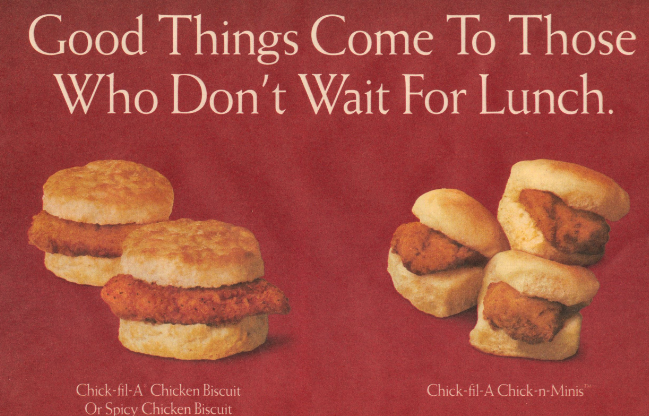Have you ever wondered what it takes to create a campaign that will stick in people’s minds and create such an impression that it changes the way they think? In this article, we’ll be looking at how advertising can grab your attention, without you realizing it.
“When irrational acts are committed knowingly they become a sort of delicious luxury.” - Vance Packard, The Hidden Persuaders
Have you ever seen an advert and wondered how it related to the product it was trying to sell? The answer is yes, whether or not you realized or recognized it. If you switch on your television, you will be presented with a wide range of adverts and, as a marketer, you should do this regularly to see what tactics and trends major companies are using.
Depending on the time of day, you will probably see different types of adverts. Larger, international companies tend to target prime-time television in the evenings between 20:00 and 23:00, whilst smaller, nationwide or local companies favour off-peak or even graveyard slots (02:00 - 06:00). Thanks to this divide, it’s easy to see the difference in methods used by advertisers.

Prime-Time
It’s important to realise that this is going to be something of an overgeneralization, however, the patterns are true enough.
If you watch adverts broadcast in prime-time slots, generally speaking, they will be glossier and more abstract than those broadcast during off-peak times. Why? Well, budget first and foremost. Only companies able to hire top advertising firms will have access to top creative directors. Secondly, because the audience viewing prime-time TV are likely to be more discerning. As a result, you will notice that, quite often, they are not about sales at all, but about creating an image which will create an image or brand which will then hopefully lead to sales. This is known as General or Brand Advertising.
Off-Peak
As an affiliate marketer, you’ll want to look more closely at day-time TV ad slots, as they tend to focus far more on the hard sell. Day-time TV ad slots are the bread and butter of insurance companies and charities. Why? Because they are cheaper, and those who are able to watch TV during the day are quite often more susceptible to hard-sell tactics of persuasion and CTAs. In short, day-time television favours Direct Response Advertising.
Direct Response Vs. General Advertising and Branding

The division between Direct Response and General/Brand Advertising used to be far greater than it is now. It is also a division which deserves an article all of its own and will be a topic which we cover in the near future. However, it is important, for the purposes of understanding subconscious advertising.
David Ogilvy, often lovingly termed ‘The Father of Advertising’, highlighted the division decades ago, when he made a video speech called ‘We Sell or Else’. In it, he talks about the divisions between Direct Response Advertising and General Advertising and how General Advertisers can and should learn from Direct Response Advertisers.
Affiliate marketing is primarily about Direct Response Advertising, but, as he rightly points out, the two were ‘on a collision course’.
**Click Here to Watch David Ogilvy’s ‘We Sell or Else’ **
Affiliate marketing bridges the gap between the two as the internet enables you to take influence from both. The benefit however, as highlighted by Ogilvy, is that you can see the results and measure them accurately, something which isn’t as easy in television, radio and billboard campaigns. This gives you the edge and enables you to see what works, where larger companies can’t. For example, if you see an ad that does something you think might work, then you can test similar things in your next campaign to find out whether it really is producing results or not.
Capturing Hearts and Minds
The beauty of affiliate marketing is that it allows you to be experimental and see results. Therefore, you can test out how best to engage with consumer conscience. This is important when it comes to getting people to initially click and then holding their attention for long enough that you can pique their curiosity and make them convert.
One way to do this is via the ‘hard sell’ which usually targets people’s FOMO or the Fear of Missing Out. The alternative, which is taken from General Advertising, is the ability to create a feeling and have a lasting impression on the consumer.
People are far less susceptible to advertising than they were a few decades ago, and people are far less likely to be duped or conned into buying things. More likely, as the quotation at the top suggests, is that they will buy impulsively but deliberately, to fulfil a guilty pleasure. Therefore, it can be more beneficial to play into the customers’ hands and mindset by targeting their emotions, rather than by highlighting the attributes of the product itself, a theory backed by science!
First Impressions Matter
The system in our brains which manages instinctive defence and reflex is the same as that which serves to turn us into consumers. The limbic system works without us knowing it and not only will it alert us to signs of danger, but it will also ensure that we make long-term associations about companies based on their campaigns. If you present your offers in a positive way with associations which garner trust, then that image will be very difficult for people to shake.
It’s no coincidence that adverts have, by and large, become either more abstract or more emotional in recent years. This is because, by doing so, companies create associations which imprint a near permanent image, so that every time a person sees reference to the product or emotion associated, they subconsciously link the two. Therefore, you may have campaigns where it is more beneficial to attempt to instill a feeling in someone than to tell them that your product will give them what they want. How can you do this?
Subconscious Methods

One of the easiest ways to drive positivity in your campaigns is by using images. These can be very varied, and it’s always worth testing out images to which one have the most impact. Generally, your images ought to be high-quality and associated with the message or emotion you are trying to instill. Pictures of women smiling at salad is ok, but those images have probably been seen hundreds of times by your visitors. Stock photos of people can work well but be careful of using ones which are too ‘obvious’. Something fresh and original, however, might have more of an impact.
Other images you can use are ones which are associative. Take the 2001 O2 campaign which was used to breathe new life into the failing Cellnet brand. Their entire campaign, including the company name was drawn up to ensure viewers felt calmer and more relaxed. They didn’t focus any of their campaign on the product as they had no points to up-sell yet, 4 years later, they became the industry leader.
Another way in which to implant emotions is through colour. Click here to check out our article on How to Influence Your Customers Through Colours. This can be a very valuable technique and one which shouldn’t be overlooked.
Last but not least are the words you use. You should always try to avoid using the passive in Direct Response Advertising. Alongside this, make sure that you have a good understanding of the associations of words you use. For example, avoid the word ‘cheap’ as it often suggests poor quality. Instead, opt for words like ‘value’ or ‘inexpensive’, although when it comes to talking about price, it is often wise to avoid it in your initial sales pitch.

